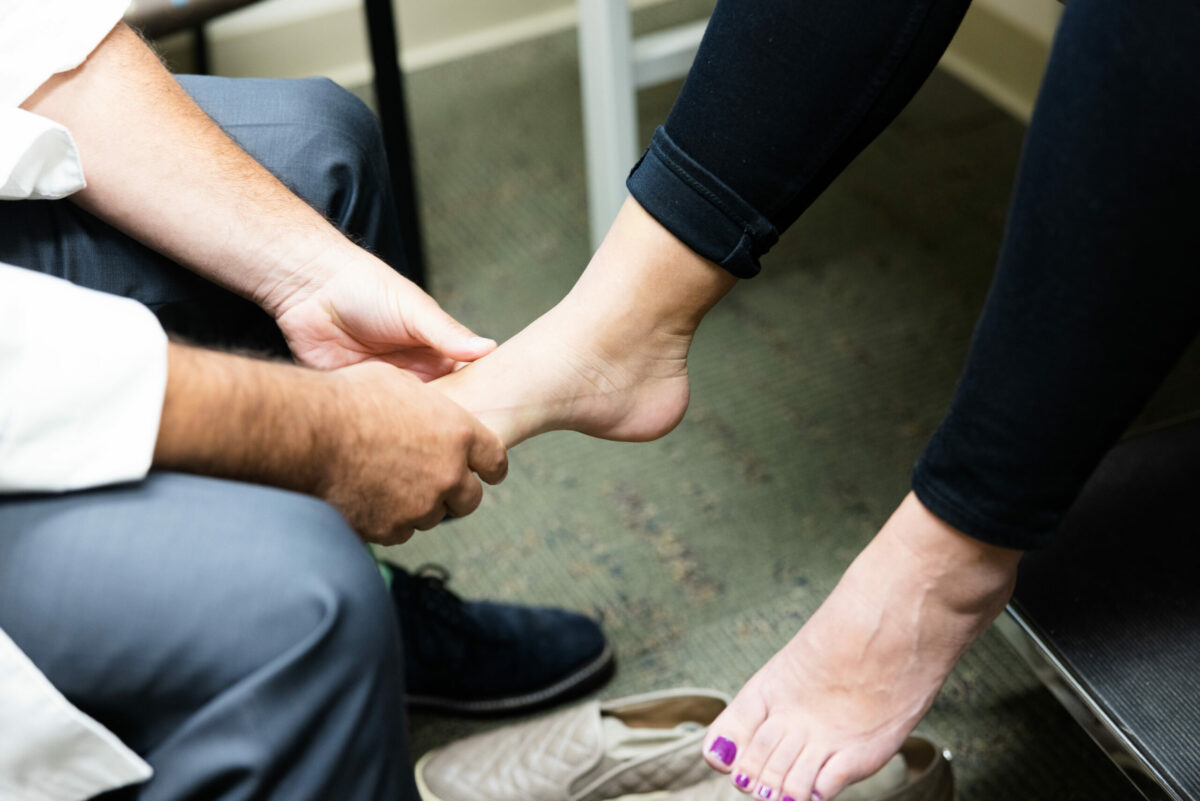
Have you been experiencing pain underneath your heel? If so, it is possible that you are suffering from plantar fasciitis. Learn more about what causes pain from plantar fasciitis, and how you can treat and prevent this condition with EmergeOrtho-Triangle Region.
What is Plantar Fasciitis, and Why Does it Cause Pain?
Plantar fasciitis is a condition caused by tissue separating from the heel bone. When tissue begins to separate from the heel, your body creates inflammation. When you step on the swollen tissue, it causes a painful sensation.
Pain is usually felt during the first few steps in the morning or after resting. In more severe cases, pain and throbbing may be experienced even when off your foot. Keep reading to learn how to get rid of plantar fasciitis pain and avoid it in the future.
Treating Pain from Plantar Fasciitis
The best way to treat plantar fasciitis is by providing the foot with support and reducing the swelling in the tissue. Support is usually provided through insoles, while swelling is usually reduced through the help of foot stretches and massage, as well as devices such as ankle compression sleeves and foot rollers. Consistent elevation of the affected foot is also helpful.

1. Reducing Inflammation
- Medications, such as over-the-counter topical or oral anti-inflammatory drugs (NSAIDs), can treat both inflammation and pain.
- Pressure (applied by rolling a frozen water bottle under the heel) decreases inflammation. Apply pressure not only on the arch, but under the heel as well. John Lord, DPM at EmergeOrtho-Triangle Region, recommends applying light pressure until your foot becomes a bit uncomfortable, and then rocking the bottle under the heel and arch. As the pain improves, you can slowly increase the pressure. Do these exercises for three minutes each, 4-6 times per day.
- Night splints and ankle compression sleeves prevent more swelling from building up. You can wear these devices together or separately.
- A warm water and Epsom Salt soak before bedtime is another way to promote healing.
- Massage can also be very effective, since it physically pushes away the fluid that causes swelling. You can use Voltaren gel to massage the area and elevate the foot above the heart for 15-30 minutes. While the foot is elevated, use a belt to lightly pull back your big toe and stretch the heel.
- Lifestyle modifications that allow your foot to rest will help you heal faster. Though walking and exercise are great for you in general, they can worsen plantar fasciitis by straining the affected area. This would be a great opportunity to try different forms of exercise, such as biking or swimming. Keep in mind that inflammation is made worse by poor eating and sleeping habits, too much stress, and an inactive lifestyle.
2. Adding Support
In addition to reducing inflammation, you’ll want to give your feet some extra support. Stability or motion control shoes can be found at your local athletic store. You do not have to find a pair for pronation or supination; it is most important to find a pair that feels comfortable. (Purchase this pair from a store with a flexible return policy, just in case they do not end up working for you.) If you prefer, you can purchase a short or tall controlled ankle motion (CAM) walker from a local medical supply store or online.
There are many types of physical treatments that can reduce swelling, and it is best to use a combination of methods to treat plantar fasciitis.
3. Preventing Future Outbreaks
Plantar fasciitis and the associated pain is preventable. Try the following in order to avoid this condition in the future:
- Become familiar with your body and be mindful of changes or pain. Massaging your feet in the mornings and/or evenings will help you find sore areas.
- Try lower-impact exercises such as yoga, biking, or swimming.
- Wear supportive footwear: a shoe with an adjustable half-inch lift at the heel and stiffness at the midsole. Flat, overly-flexible shoes make your feet work the hardest. If your feet are overworked, try a shoe with a thicker heel. Searching for “hiking sandals” on the internet is a good place to start if you are in the market for summer shoes.
Pain under the heel is often linked to swelling from the heel bone. Pain from this condition can be helped through a variety of methods that get rid of inflammation and give your feet extra support. Plantar Fasciitis is not just treatable, but preventable as well! Emerge Stronger, Healthier, and Better with the help of EmergeOrtho—Triangle Region. We encourage you to self-schedule an appointment. Or, call us any time at (919) 220-5255.







